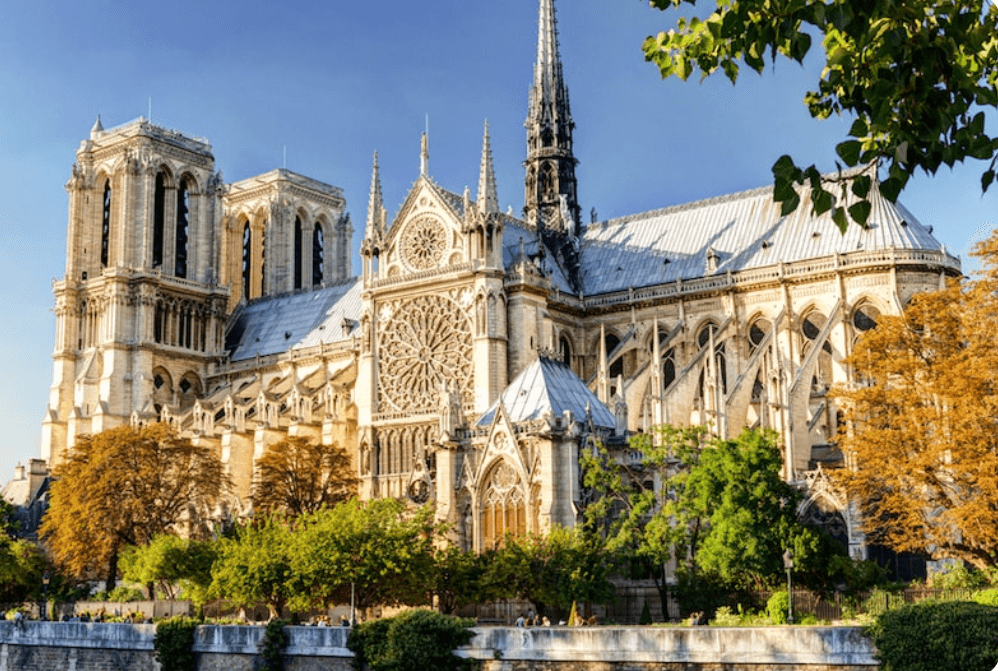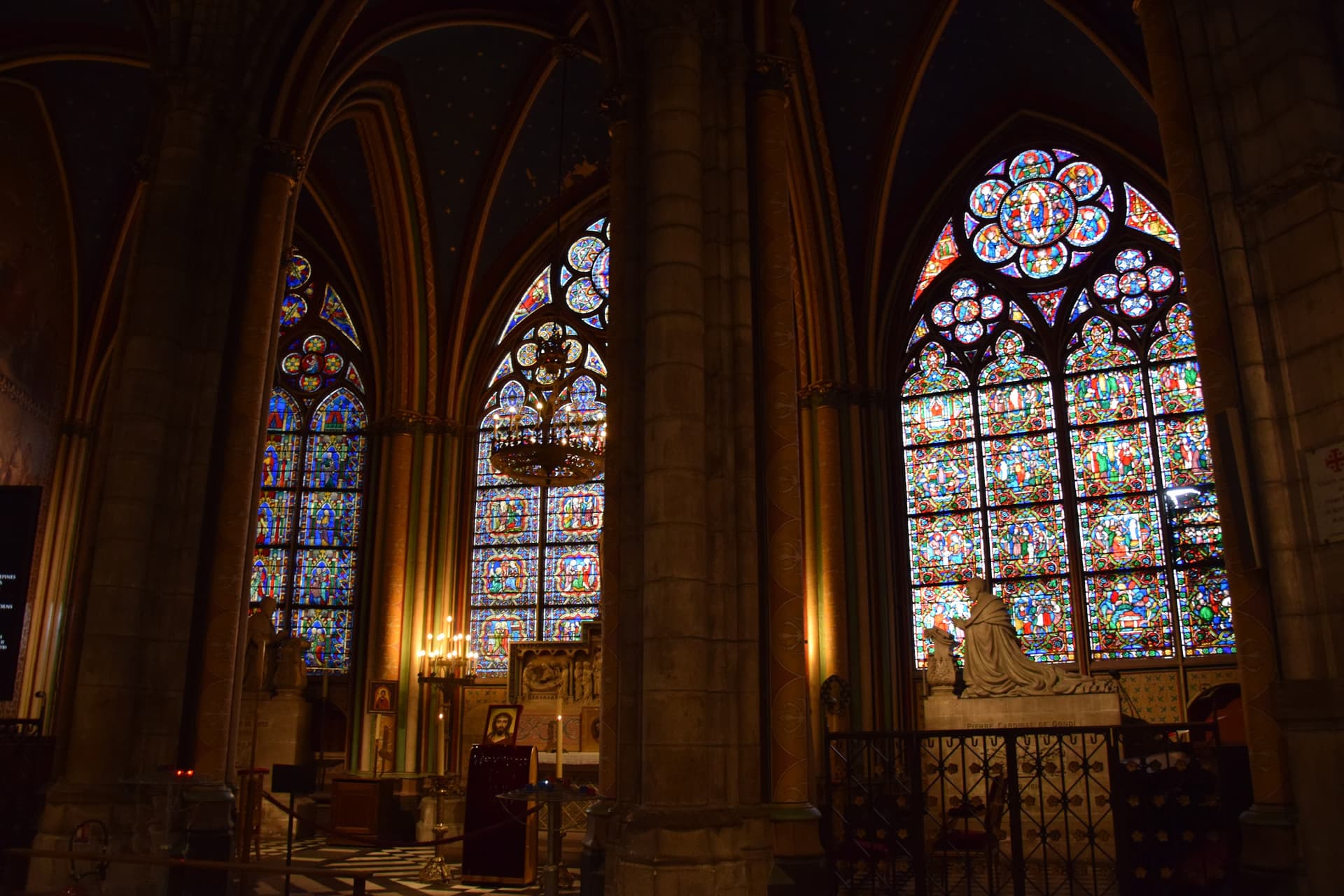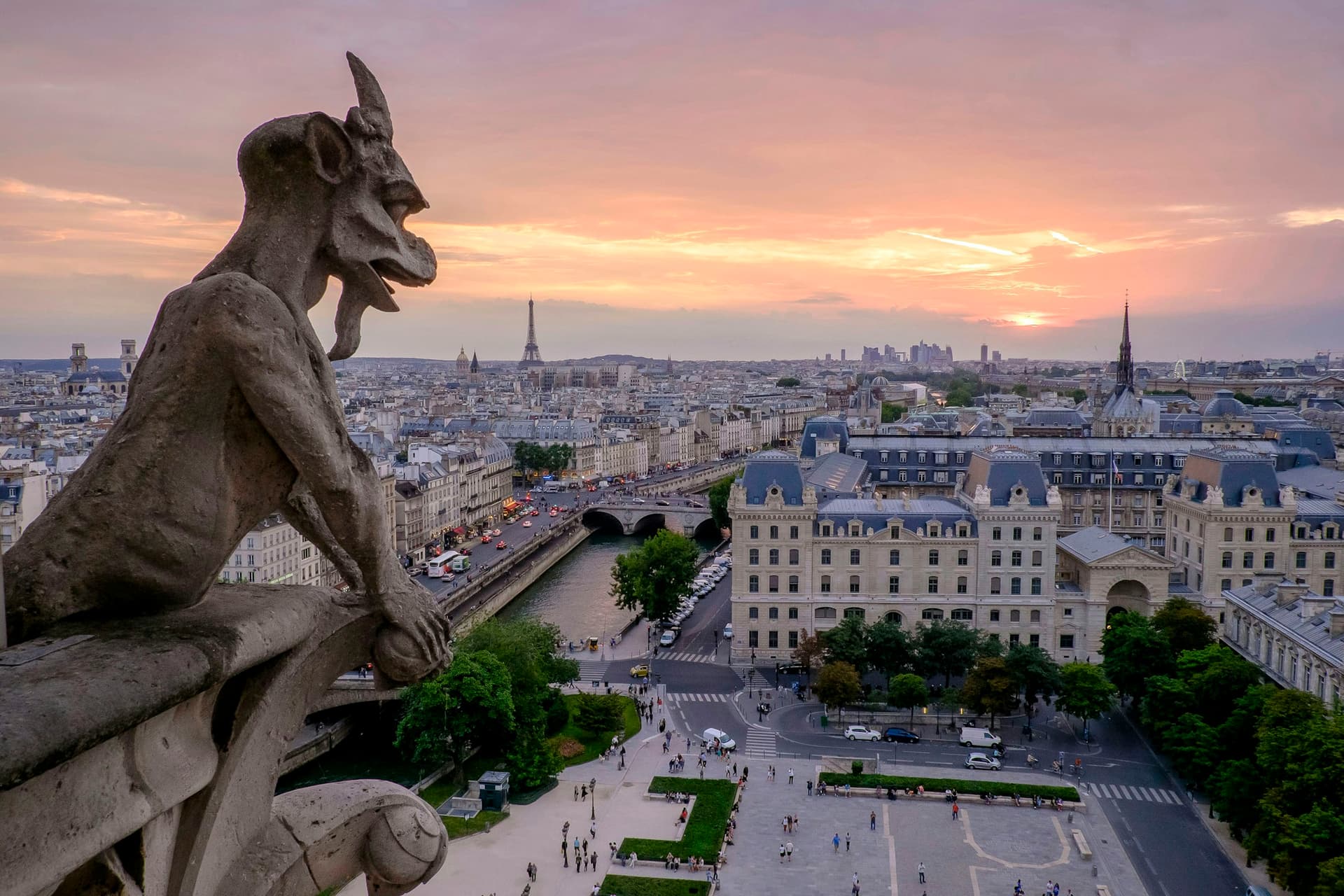Audio GuideCathédrale Notre-Dame de Paris
Towering, 12th-century cathedral with flying buttresses & gargoyles, setting for Hugo's novel.
Rising from a small island in the Seine at the very heart of Paris, Notre-Dame Cathedral draws visitors from across the globe. Its imposing towers, standing high above the rooftops, have witnessed nearly nine centuries of Parisian history unfold below. The story of the cathedral begins in the twelfth century, when crowds of workers laid its foundation stone at the request of King Louis the Seventh and Pope Alexander the Third. Although financial setbacks meant that building work took nearly two hundred years, Notre-Dame emerged as a triumph of Gothic architecture—with its soaring pointed arches, ribbed stone vaults, and the now-iconic flying buttresses that support the vast stone walls.
Over the centuries, these storied halls have hosted legendary moments—kings have been crowned here, emperors such as Napoleon have claimed their thrones within its walls, and the city has gathered to mark both joyous and mournful occasions. The French Revolution brought the threat of total destruction: the cathedral’s statues, especially the line of twenty-eight stone kings on the façade, became targets in a fervour to erase all traces of royalty. Many sculptures were decapitated, yet fragments survived, hidden and buried, only to be rediscovered centuries later and are now on display in museums.
Artistic vision and folklore have helped shape Notre-Dame’s unique character. The famous gargoyles and enigmatic chimeras perched along the balustrades were added during a sweeping nineteenth-century restoration led by Eugène Viollet-le-Duc. Another Parisian, the writer Victor Hugo, played a crucial role in reviving public interest in the cathedral with his novel about the hunchback bell-ringer, sparking both awareness and action to rescue the monument from deterioration.
Daylight pours through magnificent stained glass rose windows, casting soft, colourful patterns on the vast stone columns. While many of these windows were crafted during the nineteenth century, three magnificent roses from the thirteenth century still dazzle with their original medieval glass, offering a direct connection to the past. Precious relics are kept within: among them, the Crown of Thorns—believed by some to have been worn by Christ—and a collection of other sacred and historic objects that continue to attract both pilgrims and visitors.
The cathedral has long been enveloped by an air of mystery. One tale describes a craftsman who forged the intricate ironwork for the grand doors, said only to have finished his masterpiece after a mysterious encounter at midnight with a dark spirit.
The bells of Notre-Dame have marked time through the ages, their deep notes echoing across the city. The oldest bell, Emmanuel, dates back to the late seventeenth century and still rings to mark significant occasions in the life of Paris.
On the fifteenth of April two thousand and nineteen, fire consumed much of the roof and claimed the delicate nineteenth-century spire, yet—true to its history—Notre-Dame became a rallying point once more, inspiring people from every corner of the globe to unite in restoring her.
Today, Notre-Dame remains one of France’s most powerful symbols—of faith, of history, and of national identity. Its layered architecture, resonant legends, and ongoing rebirth invite each visitor to step into a living story, shaped by centuries of devotion, creativity, and the ever-changing spirit of Paris itself.



